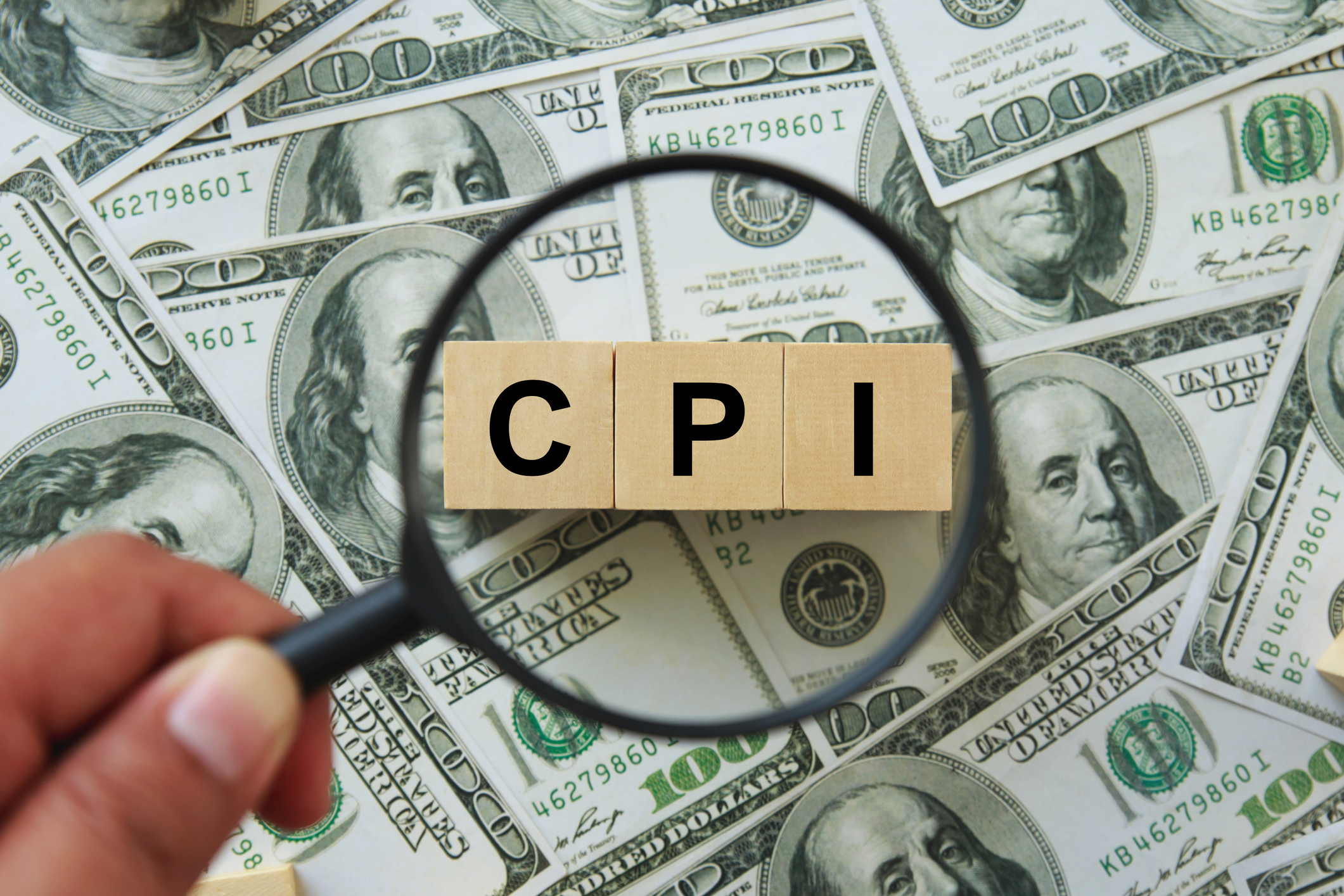July CPI Report Supports September Easing: What the Experts Are Saying About Inflation
The continued downtrend in inflation raises the odds for a September rate cut from the Federal Reserve.


Inflation eased for a fourth straight month in July, keeping the Federal Reserve on track to bring interest rates down from a 23-year high at the next Fed meeting, experts say.
Headline July CPI increased 0.2% month-over-month, according to the Bureau of Labor Statistics, which was in line with economists' forecast. On an annual basis, CPI came in below 3.0% for the first time since 2021. The headline print rose 2.9% last month vs expectations for a 3.0% increase, or the same annual rate of inflation seen in June.
Core CPI, which excludes food and energy costs and is considered a better indicator of future prices, increased 3.2% in July, which was in line with estimates. On a monthly basis, core CPI rose 0.2%

Sign up for Kiplinger’s Free E-Newsletters
Profit and prosper with the best of expert advice on investing, taxes, retirement, personal finance and more - straight to your e-mail.
Profit and prosper with the best of expert advice - straight to your e-mail.
The BLS said that the shelter component of the consumer price index was responsible for most of the advance in inflation last month.
Fed Chair Jerome Powell and the Federal Open Market Committee (FOMC) are looking for sustained evidence that inflation is decisively headed toward its long-term target of 2% before they move to cut the federal funds rate. The latest CPI report adds yet another dovish data point to the Fed's deliberations on interest rates, experts say.
"The report reveals that year-on-year consumer inflation remains on its downward path and is making further progress toward the Fed's 2.0% goal on a sustained basis," wrote Scott Anderson, chief U.S. economist at BMO Capital Markets. "Nothing in today's CPI report precludes a Fed rate cut in September, but it also doesn't scream out for a panicked half-point cut either."
As of August 14, futures traders assigned a 65% probability to the first quarter-point cut coming in September, up from 47% a day ago, according to CME Group's FedWatch Tool. Odds for a half-point cut in September fell to 35% from 53% the day prior. Taken together, traders currently assign a 100% probability to the FOMC reducing rates in September. Only the size of the cut would appear to be in dispute, per the futures market.
With the July CPI report now a matter of record, we turned to economists, strategists and other experts for their thoughts on what the data means for markets, macroeconomics and monetary policy going forward. Please see a selection of their commentary, sometimes edited for brevity or clarity, below.
Expert takes on the CPI report

"With CPI inflation at 2.9%, the Fed is getting closer to their goal. Average hourly earnings came in slightly below expectations, but this seems like a goldilocks report for the Fed. This is further evidence that consumers are re-anchoring inflation expectations in line with the Fed mandate." – Scott Helfstein, head of investment strategy at Global X
"The Fed has clearly stated that it needed to see more data in line with recent prints – not better data – in order to justify a cutting cycle to begin in September. We believe this bar is amply met with today's data. Economic momentum is slowing. For a Fed that is concerned about its balance of risks, and who considers its policy position already tight, it's appropriate to expect a faster pace of normalization in the coming 12 months. The market is weighing the potential for a half-point cut. Though there is still plenty of time to demonstrate otherwise, we don't believe that today's data represents an urgent need to cut 50 basis points in September. Economic momentum is slowing, but signs that we are already in recession – such as a meaningful rise in jobless claims or deterioration in corporate outlook – are not yet flashing red." – Lauren Goodwin, chief market strategist at New York Life Investments
"The Fed's dual mandate is price stability and full employment, which suggests the risks are tilted firmly to the latter. We aren't sure what more the Fed needs to see to act, as the move higher in the unemployment rate lately should be in their crosshairs." – Ryan Detrick, chief market strategist at Carson Group
"The PCE index is down to 2.5% from 7.1% two years ago. This is the Fed's preferred inflation gauge, which is now closing in on the Fed's 2% target. Clearly, the Fed's medicine has been working, giving the opportunity to finally cut rates in September. While the expectation is a quarter-point cut, we believe a 50 basis point cut is entirely possible, given the nearly 1% rise in unemployment to 4.3%. The Fed's dual mandate is high employment and low inflation. The weak inflation number should allow the Fed to focus more on employment as the economy continues to weaken." – Eric Diton, president and managing director at The Wealth Alliance
"The relay race to Fed cuts is on! Today's CPI print of a rounded 0.2% cleared the way for a quarter-point cut in September, while not completely shutting the door on the chance of a 50 basis point cut. We saw expected declines in used car prices and airfares, as well as a modest decline in new car prices following last month's disruptions to dealer software systems. By contrast, shelter costs were hotter than the Fed would like. This leaves us in a zone where fixed income still has income, Fed is on track to cut some amount in September, and we've got two more legs of this race to go – CPI and nonfarm payrolls." – Lindsay Rosner, head of multi-sector fixed income at Goldman Sachs Asset Management
"Today's CPI keeps the market on track for a potential rate cut next month. It was a little discouraging to see shelter tick back up after July's easing, but the trend toward lower inflation is intact. Getting the headline number under 3.0% for the first time in over three years was also an important milestone." – David Russell, global head of market strategy at TradeStation
"With today's CPI print very much in line with consensus expectations, this report supports the disinflation trend and a Fed that will be willing to cut rates in September. However, this CPI print does not scream out for a 50-basis point rate cut. Rather, a quarter-point rate cut for next month is more likely. With a renewed focus on its dual mandate, the Fed will now be more interested in the health of the economy – namely, retail sales and the initial jobless claims. Any weakness we see elsewhere in the economy would be more likely than today's CPI print to point to a 50-basis point rate cut in September." – Rajeev Sharma, managing director of fixed income investments at Key Wealth
"This inflation report, combined with the weaker July jobs report, shows a solid but slowing economy with inflation still modestly above the Fed's target. This puts the Fed's dual mandate of full employment and stable prices roughly in balance. However, we would expect to see continued volatility in stocks and interest rates as the markets could have an outsized reaction to data in either direction." – David Royal, chief financial and investment officer at Thrivent
"Consumer price inflation met expectations today, with headline year-over-year CPI slightly better than anticipated, dropping to 2.9% compared to the expected 3.0%. Last month, headline CPI was also at 3.0%. Considering this week's inflation data, including yesterday's PPI numbers, and the decline in both market-based and survey-based short-term inflation expectations to multi-year lows, the strong possibility of a Fed rate cut in September remains on the table." – Rusty Vanneman, chief investment officer at Orion Wealth Management
"This latest report is a green light for the Fed to start an aggressive rate cutting cycle – it is freed to focus on the full-employment aspect of its dual mandate. The futures market briefly priced in 50 basis points on the heels of the Yen unwind, but has settled in at a more measured 25 basis points. We expect the 25 basis points cut in September to be the first of many consecutive rate cuts as the Fed moves quickly toward its perceived neutral rate, currently projected to be 2.8%, which it believes to be neither stimulative nor restrictive policy." – Mace McCain, chief investment officer at Frost Investment Advisors
"An in-line CPI report that supports the idea that inflation is no longer threatening is what we needed. It allows the Fed to continue shifting focus towards the employment half of their mandate. Labor market data between now and September will be the primary determinant of whether their first cut is 25 basis points or 50 basis points." – Elyse Ausenbaugh, head of investment strategy at J.P. Morgan Wealth Management
Related Content
Get Kiplinger Today newsletter — free
Profit and prosper with the best of Kiplinger's advice on investing, taxes, retirement, personal finance and much more. Delivered daily. Enter your email in the box and click Sign Me Up.

Dan Burrows is Kiplinger's senior investing writer, having joined the publication full time in 2016.
A long-time financial journalist, Dan is a veteran of MarketWatch, CBS MoneyWatch, SmartMoney, InvestorPlace, DailyFinance and other tier 1 national publications. He has written for The Wall Street Journal, Bloomberg and Consumer Reports and his stories have appeared in the New York Daily News, the San Jose Mercury News and Investor's Business Daily, among many other outlets. As a senior writer at AOL's DailyFinance, Dan reported market news from the floor of the New York Stock Exchange.
Once upon a time – before his days as a financial reporter and assistant financial editor at legendary fashion trade paper Women's Wear Daily – Dan worked for Spy magazine, scribbled away at Time Inc. and contributed to Maxim magazine back when lad mags were a thing. He's also written for Esquire magazine's Dubious Achievements Awards.
In his current role at Kiplinger, Dan writes about markets and macroeconomics.
Dan holds a bachelor's degree from Oberlin College and a master's degree from Columbia University.
Disclosure: Dan does not trade individual stocks or securities. He is eternally long the U.S equity market, primarily through tax-advantaged accounts.
-
 Stock Market Today: Trump Retreats, Markets Rejoice
Stock Market Today: Trump Retreats, Markets RejoiceStocks rally, yields soften, the dollar rises, and even beaten-down names enjoy the wages of potential trade peace.
By David Dittman
-
 In Trump’s Economy Should 401(k) Savers 'Set It and Forget It?'
In Trump’s Economy Should 401(k) Savers 'Set It and Forget It?'It’s hard to bury your head in the sand when the markets are volatile. Here’s when it makes sense and when it doesn’t.
By Donna Fuscaldo
-
 Stock Market Today: Trump Retreats, Markets Rejoice
Stock Market Today: Trump Retreats, Markets RejoiceStocks rally, yields soften, the dollar rises, and even beaten-down names enjoy the wages of potential trade peace.
By David Dittman
-
 Tesla Stock Pops as Elon Musk Promises DOGE Draw Back
Tesla Stock Pops as Elon Musk Promises DOGE Draw BackTesla reported a sharp drop in first-quarter earnings and sales, as the EV maker suffered a backlash to its CEO's political ambitions.
By Karee Venema
-
 Bouncing Back: New Tunes for Millennials Trying to Make It
Bouncing Back: New Tunes for Millennials Trying to Make ItAdele's mournful melodies kick off this generation's financial playlist, but with the right plan, Millennials can finish strong.
By Alvina Lo
-
 Early-Stage Startup Deals: How Do Convertible Notes Work?
Early-Stage Startup Deals: How Do Convertible Notes Work?Some angel investors support early startups by providing a loan in exchange for a convertible note, which includes annual interest and a maturity date.
By Murat Abdrakhmanov
-
 Stock Market Today: Stocks Soar on China Trade Talk Hopes
Stock Market Today: Stocks Soar on China Trade Talk HopesTreasury Secretary Bessent said current U.S.-China trade relations are unsustainable and signaled hopes for negotiations.
By Karee Venema
-
 How Can Investors Profit From AI's Energy Use?
How Can Investors Profit From AI's Energy Use?Global energy demand is expected to grow by leaps and bounds over the next several years as AI usage accelerates. Here's how to get a piece of the pie.
By Jacob Schroeder
-
 Can Trump Fire Powell? A Supreme Court Case Could Decide
Can Trump Fire Powell? A Supreme Court Case Could DecidePresidential posts threaten to overwhelm decades of precedent and tradition, whatever the nine justices decide.
By David Dittman
-
 What Are AI Agents and What Can They Do for You?
What Are AI Agents and What Can They Do for You?AI agents promise to be the next big thing in artificial intelligence, but what exactly do they do?
By Tom Taulli